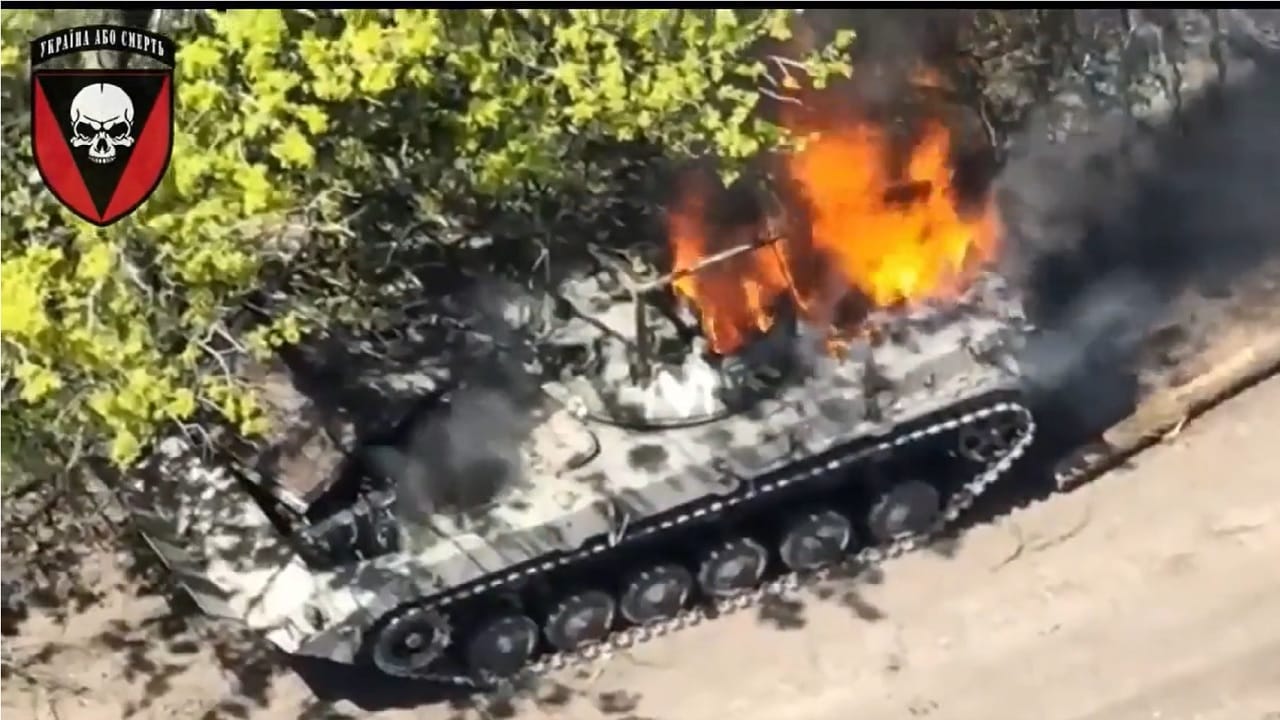On Sunday, the Russian military launched its most significant drone attack against Ukraine.
The suicide drones targeted Kyiv, killing at least one civilian and injuring another.
Russian Attack, Iranian Drones
The Russian military has struck behind the frontlines once again.
On Sunday, Moscow launched a volley of 54 suicide drones against Kyiv. This is the largest drone attack against Ukraine since the start of the wholescale invasion on February 24, 2022.
According to the Ukrainian Ministry of Defense, the Ukrainian Air Force shot down 52 out of the 54 suicide drones. The two loitering munitions that got through struck high-rise apartment buildings.
The Russian military has been running out of ballistic and cruise missiles and is using Iranian-made drones instead.
Tehran has one of the oldest drone programs in the world. Starting in the 1980s, Revolutionary Iran launched a program with the objective of producing an unmanned aerial system capability. Although Iran has been under Western sanctions for several years, Tehran continues to field a robust drone program.
Indeed, according to the American Enterprise Institute’s Critical Threats Project, Iran has at least eight main drones, including the now-famous Shahed-136, and many of them have different versions.
These unmanned aerial systems cover both tactical and strategic mission sets and can conduct strike and intelligence, surveillance, and reconnaissance (ISR) operations.
The Shahed-136 is probably the most known Iranian drone because of its widespread use by Russian forces in Ukraine. The one-way attack drone has a reported range of between 620 and 1,250 miles and carries a payload of about 90 pounds.
It is the inherent simplicity, long-range, and accuracy of the Shahed-136 that makes it particularly deadly. Moreover, the drone costs very little compared to other strategic standoff munitions.
When the Ukrainian forces finally launch their large-scale counteroffensive in the next weeks, the Kremlin could use mass suicide drone attacks to try and delay the Ukrainians. However, the Russian military’s drone stocks have likely dwindled significantly because of the intense use.
Russian Casualties in Ukraine
Meanwhile, on day 458 of the Russian invasion of Ukraine, the Russian forces keep taking significant casualties on the ground.
The rate of losses has been in a steady, downward trend over the past few days, with an average of 400 men killed or wounded troops daily.
Although this is certainly on the lower end of the casualty spectrum (Moscow had had days where it lost more than 1,000 troops in a day), the daily attrition adds up.
Overall, the Ukrainian Ministry of Defense claimed that as of Sunday, Ukrainian forces have killed and wounded approximately 206,600 Russian troops.
Destroyed equipment includes 313 fighter, attack, bomber, and transport jets, 298 attack and transport helicopters, 3,797 tanks, 3,425 artillery pieces, 7,456 armored personnel carriers and infantry fighting vehicles, 574 Multiple Launch Rocket Systems (MLRS), 18 boats and cutters, 6,192 vehicles and fuel tanks, 329 anti-aircraft batteries, 2,993 tactical unmanned aerial systems, 451 special equipment platforms, such as bridging vehicles, and four mobile Iskander ballistic missile systems, and 1,056 cruise missiles shot down by the Ukrainian air defenses.
FROM 19FortyFive: The War in Ukraine Is About to Explode
FROM 19FortyFive: Does Putin Have Cancer?

